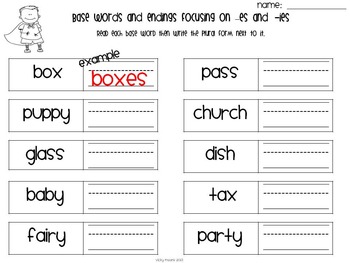
Then ask students to drag words to the column of -s or -es inflectional ending. Repeat with a second and third set of sentences. Then ask students to come to the board and drag either an -s or -es to the words in the sentences. Here are the basic rules for students to remember when it comes to inflectional. Rules, rules, rules There are so many different rules to follow when it comes to phonics skills. Teaching Inflectional Endings in 2nd Grade. Examples of inflectional endings are: -s, -ing, -es, -ed, -est. As a class, determine if the given words need an inflectional -s or -es by circling in red or blue. An inflectional ending changes the meaning of a base word. Read the words and listen to the sounds that you hear at the end of the words. Sounds of the -ed in words - This is great for a student's audio recognition skills. Repeat this exercise with all the words that can have an -s inflectional ending. Inflectional Endings Worksheets To Print: On the Water - Find the correct plural form for each given word. as an inflectional ending, such as -ness in gentleness, -ing in walking, or -s. Inflectional endings are a group of letters that change the meaning of the word.

You may ask students to the front to circle a specific word and say the word with the -es ending, or have students write the words on a sheet of paper and then tell you which words to circle. Suffixes are placed at the end of the root word and end the medical term. Inflectional endings include words with ing, ed, es/s and est at the end. As a class, ask students to circle all the words that can have the -es inflectional ending. Make sure to emphasize that both inflectional endings indicate a plural of the root word when it is a noun, and both inflectional endings indicate tense when the root word is a verb.

Then explain the rule of adding -s and give a few examples of -s ending words. Identify Homophones, Identify Prepostional Phrases, Inflectional Endings. Explain the rule of adding -es and give a few examples of -es ending words. Pronunciation of inflexional suffix endings -s, -es of the third personal singular affirmative of the present simple, plurals of regular nouns, and genitives. A, B, C, D, E, F, G, H, I, J, K, L, M, N, O, P, Q, R, S, T, U-V, W-X, Y-Z.


 0 kommentar(er)
0 kommentar(er)
